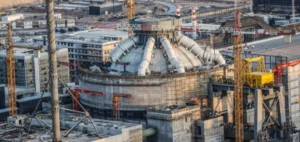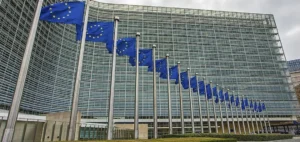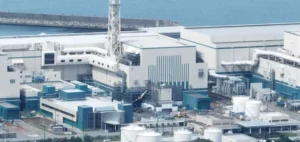SMRs (Small modular reactors) represent one of the solutions to make nuclear energy more available and practical. Indeed, nuclear energy remains a key element in the decarbonization of the economy. However, large nuclear reactors are expensive and technically complex to build.
A strategic technology
Different types of SMRs with different reactor design features are under development, especially in the United States. This technology represents one-tenth to one-third of the power output of light water reactors. The researchers believe that this technology is favorable for large-scale commercial exploitation because of its characteristics.
This would allow the electricity generated by the SMRs to be distributed locally and inexpensively. However, the information on nuclear waste lacks detail. Thus, Taek Kyum Kim senior nuclear engineer at the U.S. Department of Energy’s (DoE) Argonne National Laboratory, says:
“We have only just begun to study the attributes of nuclear waste from SMRs.”
Although these reactors are not yet in commercial operation, several companies are working with the DoE to explore different possibilities. In a report published by the DoE, three designs of SMRs coexist and would be operational by the end of the decade. NuScale Power, thus bases its type of SMR, VOYGR, on a conventional pressurized water reactor but in a reduced format.
TerraPower bases its SMR, Natrium, on sodium cooling, operating with a metallic fuel. Finally, X-energy bases its SMR, Xe-100, on helium gas cooling. When it comes to nuclear waste, each type of reactor offers advantages and disadvantages compared to conventional nuclear reactors.
Different conceptions
Indeed, the size of the reactor is not proportional to the problems of nuclear waste treatment. Taek Kyum Kim senior nuclear engineer at the U.S. Department of Energy (DoE) Argonne National Laboratory, says:
“Each reactor has advantages and disadvantages that depend on discharge burnup, uranium enrichment, thermal efficiency, and other reactor-specific design features.”
The factor influencing the amount of waste is the amount of thermal energy produced from the amount of fuel.
Higher combustion implies lower nuclear waste production. Thus, Natrium and Xe-100 have a significantly higher burnup than conventional reactors, or VOYGR. Indeed, the stronger the combustion, the more efficient the fuel is in the transformation into energy.
The design of the SMR VOYGR has a lower combustion rate. This characteristic therefore implies a thermal efficiency lower than that of a pressurized water reactor. These data explain the differences in nuclear waste.
Spent fuel from the VOYGR SMR is similar to waste from conventional nuclear reactors. These types of waste are more concentrated with long-lived isotopes. The Natrium and Xe-100 SMR wastes, produce a lower density but a larger volume of spent fuel.






















